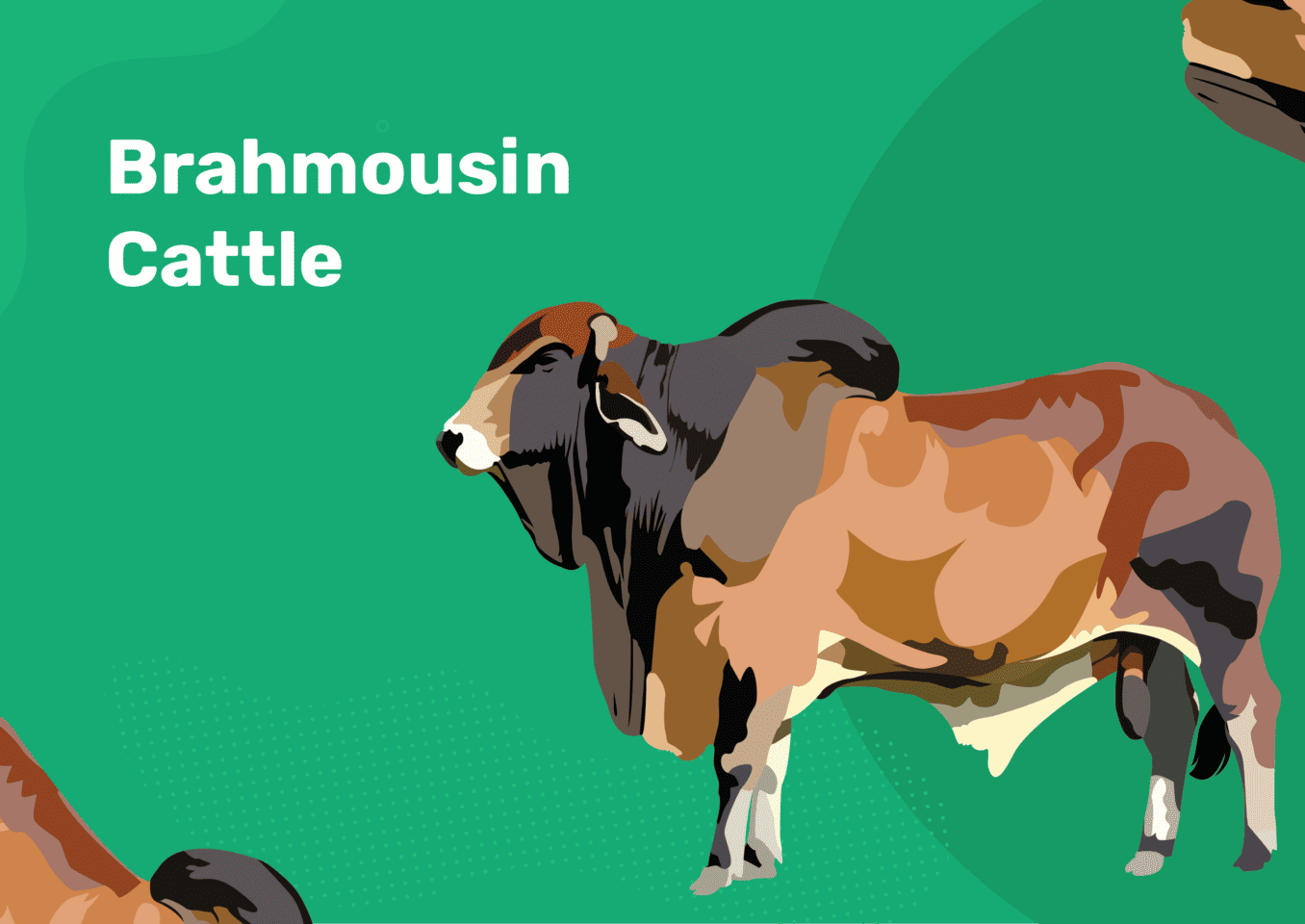The Brahmousin cow is a mix between the Limousin and Brahman breeds, so they have both breeds’ characteristics. Generally, this breed is referred to as 5/8 Limousin and 3/8 Brahman. However, the variables can vary. Some registries allow for different percentages.
To register this cow, the sire can be either a Limousin, Brahman, or Brahmousin bull.
This breed is widely available throughout the United States. They were bred to adapt to the various climates in the U.S., which makes them quite popular.

Quick Facts About the Brahmousin
| Breed Name: | Brahmousin Cattle |
| Place of Origin: | Texas, U.S.A. |
| Uses: | Meat |
| Bull Size: | Various |
| Cow Size: | Various |
| Color: | Red to tan |
| Lifespan: | 15–20 |
| Climate Tolerance: | High |
| Care Level: | Low |
| Production: | High carcass quality |
Brahmousin Cattle Origins
The Brahmousin was first bred in the 1970s by Daryl Wiggins, who lived in Texas at the time. The breed started from multiple Limousin embryos that had been imported from France. These grew into six heifers and three bulls, which formed the basis of the Limousin half of this breed.
After that, the cattle were crossed with Brahman cattle, producing the first generation.
The cattle were crossed more until they were 5/8 to 3/8, which is where their percentage stands today.
The purpose of developing this breed was to maximize reproductive efficiency and mothering ability. The breed was also bred to excel in growth and adapt to the various environments in the U.S.
Brahmousin Cattle Characteristics
The Brahmousin was bred to be the best of both worlds. They have a high heat tolerance, which is essential in Texas. This breed is also resistant to insects. In many parts of the U.S., this trait is vital. They also feed efficiently, which is a Brahman trait. They are fast growing and have a strong confirmation due to their Limousin DNA.
Overall, they are a high-quality American breed.
Females are well-known for their reproductive abilities, which is one of the reasons that this breed was created. They stay fertile for a long time and have powerful mothering instincts.
The bulls also have strong reproductive qualities. They are active breeders and highly fertile, which has helped the breed increase quickly.
These cows come in varying percentages. Therefore, farmers can select a cow that best fits their environment and needs. These cows are renowned for their extreme customizability in this way.
Uses
These cows are primarily utilized for their meat. They have strong confirmation and grow well, making them great meat cows. Their carcasses are some of the best around.
They also have optimal milk production, which often grows their calves large and fast. Compared to some other breeds, their calves are on the smaller side when they are born. However, this helps prevent issues during labor. They grow incredibly quickly, though.
These cows are primarily utilized for their hardiness. They are well-adapted to the hotter climates of the United States, and different cows can also be utilized for different areas.
They are an extremely hardy breed that grows quickly.
Appearance & Varieties
These cattle vary widely because different individuals may have different percentages. Technically, any percentage makes them fall into the Brahmousin category. So, you can have almost entirely Brahman cattle and almost completely Limousin cattle all falling into this category. This can lead to many differences.
For the most part, these cattle are red or tan in coloration. Their legs, underbelly, and face are a lighter shade. Their skin is often somewhat loose, like the Brahman’s skin. They tend to be a large breed, though this depends on the exact confirmation and percentages.
Population/Distribution/Habitat
This breed was initially developed in Texas, where the majority of them remain today. They were bred for their heat hardiness, so they also live in some of the other southern states.
They can be found in other U.S. states, though, and in Australia, where they fit in nicely.
Since these cattle vary in percentages, different farmers can select different cattle to fit their needs. Therefore, these cows can easily adapt to other areas.
There are plenty of them around and they are easy to come by, though the breed is newer than most. Their popularity took off rapidly.
- See Also: Randall Cattle Breed

Are Brahmousin Cattle Good for Small-Scale Farming?
These cattle are great for small-scale farming, especially if you live in a warm area. They do not require extensive amounts of care. They get pregnant and give birth easily, with the heifers making great mothers. Generally, they tend to be healthy and hardy, so there aren’t too many problems to worry about.
This breed is typically used for their meat, as they get rather large and grow quickly. That was their original purpose. However, they are also great milk producers, so you may decide to use them for that purpose too.
